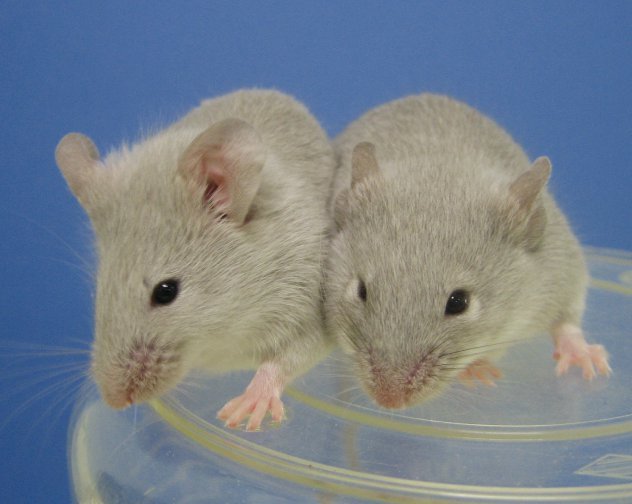Japanese researchers have turned mouse stem cells into germ cells that give rise to eggs in living mice, which then produced viable offspring via in vitro fertilisation.
 This research, which mirrors work already done with sperm, may open the door to new insights into female germ cells and provide new leads for treating some forms of human infertility. Although, for technical reasons, such efforts are unlikely to work in humans at this stage, the research throws up a number of ethical issues relating to fertility and child raising. Some speculate that research like this will end the ticking of the female biological clock.
This research, which mirrors work already done with sperm, may open the door to new insights into female germ cells and provide new leads for treating some forms of human infertility. Although, for technical reasons, such efforts are unlikely to work in humans at this stage, the research throws up a number of ethical issues relating to fertility and child raising. Some speculate that research like this will end the ticking of the female biological clock.
Our colleagues at the AusSMC collected the following expert commentary. Feel free to use these quotes in your reporting. If you would like to contact a New Zealand expert, please contact the SMC (04 499 5476; smc@sciencemediacentre.co.nz).
Dr Bryce Vissel, Head of the Neurodegenerative Diseases Research Laboratory at the Garvan Institute of Medical Research in Sydney, comments:
“This study shows the increasing power of recent science to unravel major questions in understanding human biology. The study, performed in mice, suggests that it may be possible one day to create functioning useable human eggs (called oocytes), but this is not feasible or viable at this time.
“In this study, the investigators have shown in mice that it is possible to take cells, like those found in skin, convert them to stem cells (scientifically called induced pluripotent stem cells) and manipulate those cells through a series of complicated steps to ultimately create female eggs in mice. They repeated this using embryonic stem cells. Incredibly, some of the eggs (scientifically these are called oocytes) showed all the major properties of natural female eggs: the eggs were able to be transplanted, and fertilised, giving rise to newborn pups that were themselves fertile.
“The study is most important because it could allow investigation of the mechanisms by which functioning female eggs actually develop in humans which has numerous important biological implications. The study might also be taken to suggest that it may be possible, one day, to create human eggs (oocytes) that could be used to help infertility, for example.
“However creating human eggs that could be used to help infertility is not possible at present and will remain fraught with scientific challenges and hurdles, including major questions relating to viability, reliability and safety.”
Professor Robert Norman, Director of the Robinson institute and Professor of Reproductive and Periconceptual Medicine at the University of Adelaide, comments:
“For many infertile couples, finding they have no sperm or eggs is a devastating blow for which there is no solution other than to not have children, or to use donor gametes. The latter is fraught with controversy and having a third parent, either known or unknown, is a major emotional and social issue. If a person with no gametes could use their own cells to create a child all the problems would disappear.
“This paper offers light to those who want a child, who is genetically related to them, by using personalised stem cells to create eggs that can produce an offspring that appears to be healthy. It also offers the potential for women to have their own children well past menopause raising even more ethical issues. Major concerns still need to be addressed including long-term health of the offspring. While this is a major contribution to knowledge, application to humans is still a long way off but for the first time the goal appears to be in sight.”
Associate Professor Kuldip Sidhu is Director of the Stem Cell Lab and Chair of Stem Cell Biology at the University of New South Wales. He comments:
“Germ cells are highly specialised populations of cells that are necessary for the continuation and evolution of the species. Germ cell development in mammals has been difficult to study because the important early events occur after they’re implanted in the womb. It’s very difficult to study in humans because of ethical issues involved in accessing this material. The recent availability of embryonic stem cells derived from embryos has led to a new era in stem cell research for their therapeutic potential in basic research and regenerative medicine.
“Several groups have shown that germ cells can be produced in vitro from embryonic stem cells and also from induced pluripotent stem cells (produced from adult tissue by reprogramming) and adult stem cells. The first live birth in mice from germ cells (sperm) derived from embryonic stem cells was reported in 2006. These results suggest that formation of germ cells from embryonic stem cells may provide an in vitro model to investigate germ cell development and facilitate molecular analysis.
“This study has developed a unique way to generate early stage primordial germ cells from embryonic stem cells in mice to mature into fully-grown oocytes for fertilisation in the Petri dish. The fertile mice were able to produce live pups. The big question is whether these methods will work with human embryonic stem cells. Ultimately, differentiating functional oocytes from human embryonic stem cells and the induced pluripotent stem cells potentially provide a way to understand female infertility and treat women with premature ovarian failure, reproductive ageing and/or poor oocyte quality.
“This may also open up another avenue for therapeutic cloning: making much needed human eggs available, as accessing eggs from donors for therapeutic cloning is still an ethical dilemma.”